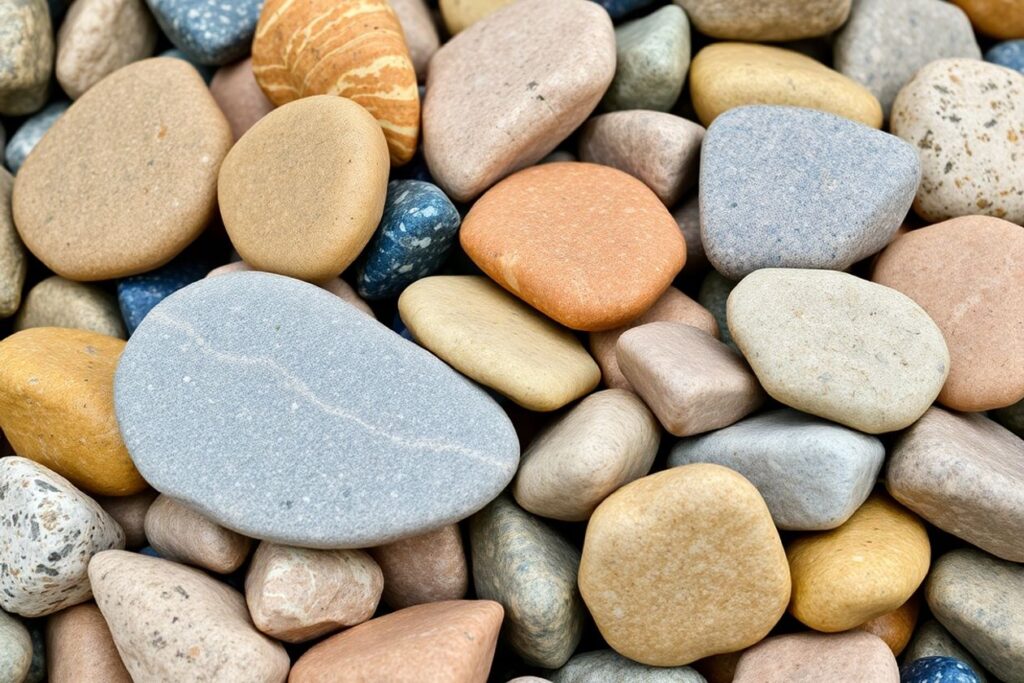If you’re looking to enhance your landscaping or construction project, buying river rock in bulk can be a great option. This guide will help you understand what river rock is, the benefits of buying it in large quantities, and where to find suppliers near you. Whether you’re a homeowner or a contractor, this information will make your purchasing process easier and more cost-effective.
- Discovering Where to Buy Souvenirs Near Me: Top Local Picks and Hidden Gems
- Discovering Where to Buy Buffalo Trace Bourbon Near Me: Your Ultimate Guide
- Where Can I Buy Pooph Near Me: Your Guide to Finding the Best Pet Odor Eliminator Locally
- Who Buys Cars Near Me: Discover Top Cash Offers for Your Vehicle
- The Ultimate Guide on Where to Buy Whippets Near Me: Top Local and Online Options
Key Takeaways
- River rock is a versatile material used for landscaping and construction.
- Buying in bulk saves money and reduces the need for multiple trips to the store.
- Consider quality, size, and delivery options when purchasing river rock.
- Local landscaping stores and online retailers are great places to find river rock.
- Negotiating with suppliers can lead to better prices, especially for bulk purchases.
Understanding the Basics of Buying River Rock in Bulk
When you decide to buy river rock in bulk, there are a few important things to know. River rock is a natural stone that comes in various sizes and colors, making it a popular choice for many projects. Here’s what you should consider:
What is River Rock?
River rock is smooth, rounded stones that are often found in riverbeds. They are used in landscaping, construction, and decorative projects. Their natural look adds beauty to any outdoor space.
Benefits of Buying in Bulk
Buying river rock in bulk can save you money and time. Here are some benefits:
- Cost-effective: Purchasing in larger quantities often reduces the price per ton.
- Convenience: Fewer trips to the store mean less hassle.
- Variety: You can choose from different sizes and colors to match your project needs.
Common Uses for River Rock
River rock is versatile and can be used in various ways:
- Landscaping: Create pathways, borders, or decorative features.
- Drainage: Use it to improve water flow in gardens.
- Erosion Control: Helps prevent soil erosion on slopes.
Remember, understanding the different types of river rock and their uses will help you make the best choice for your project.
By keeping these basics in mind, you can confidently navigate the process of buying river rock in bulk and ensure you get the right materials for your needs.
Factors to Consider When Purchasing River Rock
When you’re looking to buy river rock in bulk, there are several important factors to keep in mind to ensure you make the best choice for your project.
Quality and Size of River Rock
The quality of the river rock is crucial. Inspect the rocks for any defects or irregularities that could affect their usability. Additionally, consider the size of the rocks you need; different projects may require different sizes. Here are some common sizes:
- Small (1-2 inches)
- Medium (2-4 inches)
- Large (4-6 inches)
Cost and Budget Considerations
Before making a purchase, compare prices from various suppliers. While it might be tempting to go for the cheapest option, remember that quality matters. Here’s a simple table to help you compare:
| Supplier | Price per Ton | Quality Rating |
|---|---|---|
| Supplier A | $100 | High |
| Supplier B | $80 | Medium |
| Supplier C | $60 | Low |




Delivery and Transportation
Read More : Discover Where You Can Buy Soursop Near Me for Fresh Tropical Delights
Don’t forget to ask about delivery options. Some suppliers will deliver the river rock to your location, while others may require you to pick it up. Understanding the logistics of delivery is essential to avoid any surprises. Consider the following:
- Access to your property
- Size and weight of the rocks
- Any obstacles that may hinder delivery
By paying attention to these factors, you can ensure a smooth and hassle-free buying experience. Remember, the right river rock can enhance your landscape and provide long-lasting beauty.
Where to Find River Rock Suppliers Near You
Finding the right suppliers for river rock can make your landscaping project much easier. Here are some great places to start your search:
Local Landscaping Supply Stores
- Visit local landscaping supply stores to find a variety of river rocks in different sizes and colors. These stores often sell in bulk, which can save you money.
- Check if they allow you to pick your own rocks, as this can help you find the perfect ones for your project.
- Don’t forget to ask about delivery options if you need a large quantity.
Online Retailers and Marketplaces
- The internet is a powerful tool for finding river rock suppliers. Websites like Amazon or specialized landscaping sites often have a wide selection.
- Compare prices and read reviews to ensure you’re getting quality rocks at a fair price.
- Look for local delivery options to save on shipping costs.
Word-of-Mouth Recommendations
- Ask friends, family, or neighbors if they know any good suppliers. Personal recommendations can lead you to reliable sources.
- Join local gardening or landscaping groups on social media to get suggestions from others in your area.
- Don’t hesitate to call local landscaping companies to see if they sell river rock directly.
Remember, this guide provides essential information on purchasing river rock in bulk for landscaping projects. It covers the benefits of river rock, factors to consider when buying, and top places to purchase, including local suppliers, online marketplaces, and quarries. The average cost ranges from $100 to $300 per ton, influenced by size, color, and quality. Tips for DIY installation and maintenance are also included, ensuring a successful landscaping project.
Tips for Negotiating with River Rock Suppliers
Understanding Market Prices
Before you start negotiating, it’s important to know the current market prices for river rock. This knowledge will help you feel confident and ensure you’re getting a fair deal. Researching prices online or asking around can give you a good idea of what to expect.
Leveraging Bulk Purchases
Buying river rock in larger quantities can often save you money. Suppliers are usually more willing to offer discounts for bulk orders. Here are some tips:
- Ask about discounts for larger purchases.
- Inquire about any special deals they might have.
- Consider combining orders with friends or neighbors to increase your total purchase.
Securing the Best Deals
Negotiating can be tricky, but here are some strategies to help you:
- Be polite and respectful during discussions.
- Don’t hesitate to ask for a better price if you find a lower offer elsewhere.
- Discuss delivery options and see if they can include it in the price.
Remember, a good negotiation is about finding a win-win situation for both you and the supplier. By being informed and respectful, you can secure the best deal possible.
How to Choose the Right Type of River Rock for Your Project
Decorative vs. Functional Uses
When selecting river rock, it’s important to first determine its purpose. Are you using it for decoration or functionality? For decorative uses, you might prefer smoother, more colorful stones, while for functional purposes, such as drainage, rougher and larger stones may be more suitable.
Popular Types of River Rock
Here are some common types of river rock you might consider:
- Smooth River Rock: Great for landscaping and decorative features.
- Larger River Rock: Ideal for drainage and erosion control.
- Colored River Rock: Adds visual interest to gardens and pathways.
Matching River Rock to Your Landscape Design
To ensure your river rock complements your outdoor space, consider the following:
- Color Scheme: Choose colors that match or contrast with your existing landscape.
- Size: Ensure the size of the rocks fits the scale of your project.
- Texture: Mix different textures for a more dynamic look.
Choosing the right type of river rock can significantly enhance the beauty and functionality of your outdoor space. Take your time to explore options and make an informed choice.
Preparing for Your River Rock Delivery
When you’re ready to receive your river rock, there are a few important steps to ensure everything goes smoothly. Planning ahead can save you time and stress. Here’s what you need to do:
Calculating the Amount Needed
- Measure the area where you plan to use the river rock.
- Decide on the thickness of the rock layer you want.
- Use an online calculator or consult a professional to determine how much rock you need.
Preparing Your Site
- Clear the area of any debris or plants.
- Level the ground to create a stable base for the rocks.
- Consider adding a weed barrier to prevent unwanted growth.
Ensuring Smooth Delivery
- Check the access to your property. Make sure there are no obstacles that could block the delivery truck.
- Communicate with your supplier about the delivery time and any special instructions.
- Be present during delivery to guide the driver if necessary.
Remember, a little preparation goes a long way in making your delivery experience hassle-free. By taking these steps, you can ensure that your river rock arrives safely and is ready for use in your project.
Read More : Discover Where to Buy Shilajit Near Me: The Best Local Options and Online Alternatives
By following these guidelines, you can enjoy a seamless delivery process and get started on your project without any hiccups. Don’t forget to discover the best places to buy your river rock to ensure quality and convenience!
Maintaining and Caring for Your River Rock
Cleaning and Upkeep
To keep your river rock looking its best, regular cleaning is essential. Here are some simple steps you can follow:
- Remove debris: Use a rake or broom to clear away leaves, dirt, and other debris.
- Wash the rocks: If they look dirty, spray them down with a hose or use a pressure washer for tougher stains.
- Inspect for damage: Check for any broken or cracked rocks and replace them if necessary.
Preventing Weed Growth
Weeds can be a nuisance in your river rock area. To prevent them from popping up, consider these methods:
- Use landscape fabric: Lay down a barrier before placing the rocks to block weeds.
- Apply mulch: Adding a layer of mulch can help suppress weed growth.
- Regular maintenance: Pull any weeds that do appear as soon as you see them.
Long-Term Durability
To ensure your river rock lasts for years, keep these tips in mind:
- Choose quality rocks: Invest in high-quality river rocks that can withstand weather changes.
- Avoid heavy traffic: Limit foot traffic in areas covered with river rock to prevent shifting and damage.
- Replenish as needed: Over time, some rocks may settle or wash away, so be prepared to add more as needed.
Remember, maintaining your river rock not only enhances its beauty but also extends its life.
Final Thoughts on Buying River Rock in Bulk
In conclusion, finding river rock in bulk can be a straightforward process if you know where to look. Start by researching local suppliers and comparing prices to get the best deal. Remember to consider the type of rock you need for your project, whether it’s for landscaping or construction. Don’t hesitate to ask for recommendations from friends or family, as they might know reliable places to buy from. With the right information and a bit of effort, you can easily find the perfect river rock to enhance your outdoor space.
Frequently Asked Questions
What is river rock used for?
River rock is commonly used for landscaping, creating pathways, and as decorative stones in gardens.
How much does river rock cost?
The price of river rock can vary, but it generally starts around $1,109.76 per ton.
Can I buy river rock in smaller amounts?
Yes, many suppliers sell river rock in smaller quantities if you don’t need a full ton.
How do I transport river rock?
You can either pick it up yourself if you have a suitable vehicle or arrange for delivery from the supplier.
Is river rock easy to maintain?
Yes, river rock requires minimal maintenance, but you may need to clean it occasionally to keep it looking good.
What size river rock should I choose for my project?
The size of river rock you choose depends on your specific project; larger rocks are good for pathways, while smaller ones are better for decorative use.
Soure: https://herego.net
Category: Reviews


